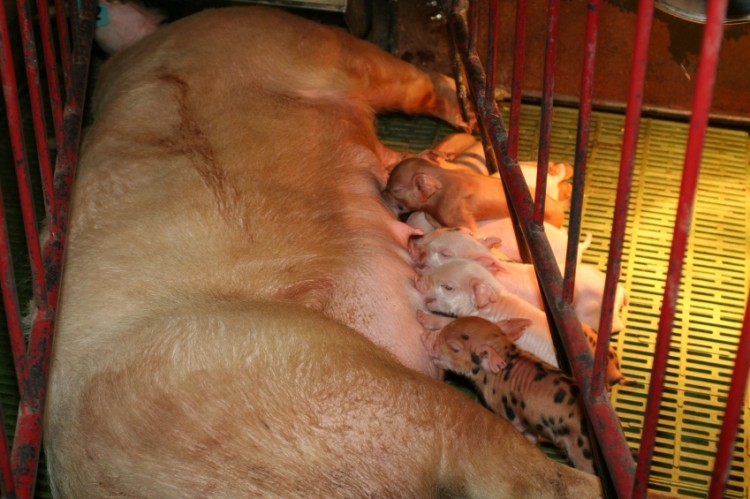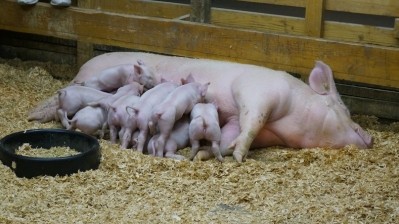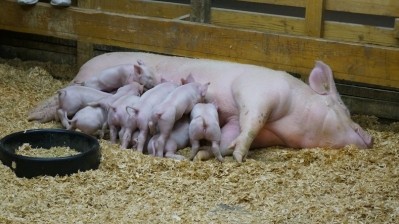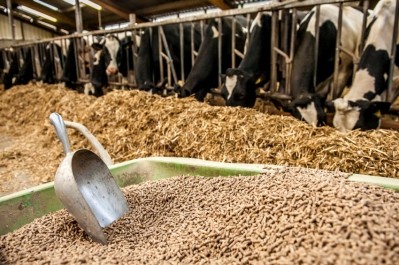DSM: vitamin and mineral intake of older sows is overlooked

Research led by Dr Dean Boyd of the Hanor Company, Franklin, Kentucky, in 2008, showed a decrease in vitamin and mineral consumption per unit of bodyweight for older sows if the ration is not adjusted for nutrients. Vitamin and trace mineral intake was estimated to decline from 26.8g per kg of bodyweight with parity one sows to 16.3g among fifth parity sows.
Dr Jon Bergstrom, senior technical support manager, swine, with DSM Nutritional Products North America, explained the reason for this decline: “Often, older sows will receive less feed per unit of bodyweight to prevent over-conditioning (excess energy leading to obesity), but will then be receiving less of the micronutrients per unit of bodyweight because the levels of micronutrient supplementation are fixed in the single gestation diet strategy,” he told FeedNavigator.
The researchers also found that increasing the amount of vitamins and trace minerals, so that older sows received the same amount of nutrients per kg of body weight as younger sows, improved litter size in mature aging sows.
According to Dr Bergstrom, there is a strong case for revising up rations for nutrients when they are adjusted for maintaining the targeted Body Condition Score.
“If the ‘single diet strategy’is used to meet the energy and lysine needs of young and old females, it is important that the vitamin or micronutrient levels are at a high enough margin of safety to meet the optimum requirements of older sows,” he said.
Implementation obstacles
However, he said that few in the industry had actually put this concept into practice.
“Many people are not aware of this and seldom think about this aspect of the sow’s nutrition and its importance, yet given the amount of recent focus on the importance of sow longevity to improve both welfare and productivity, that research is as relevant now as it ever was.”
Dr Bergstrom believes that if the production, welfare and economic benefits of such a strategy can be understood and described more thoroughly, its adaptation might become more widespread.
“There is more research into that area that needs to be done, with greater consideration for the potential benefits to growth, development and immunology of the progeny, especially with the larger litter sizes of today,” he said.
Updated vitamin guidelines
For those pig producers wishing to take advantage of these findings, DSM’s Optimum Vitamin Nutrition (OVN) guidelines for breeding female swine provide ranges for the recommended supplementation of the important vitamins.
The company is currently in the process of updating these guidelines to reflect changes in the genetics and management of swine and advancements in nutrition research, and an updated edition of the guidelines for food and companion animals will be published in 2016.
Whilst Dr Bergstrom said that he wasn’t able to elaborate on the content of the updated guidelines, he did say that changes were likely to be few, because relatively little vitamin research takes place over a five-year period.
“That being said, there might be enough information on one or several vitamins that has recently accumulated over the last five to ten years to make some very specific changes to the recommendations,” he added.
Meanwhile, he said that DSM was involved in ongoing research to improve the understanding of the importance of vitamin supplementation for swine. He listed vitamin E, the B vitamins, the conditional requirements for vitamin C and the potential benefits of supplementing diets with beta-carotene as some areas of particular interest for the future.
“I expect that this will result in changes to the future guidelines for OVN beyond 2016,” he said.













